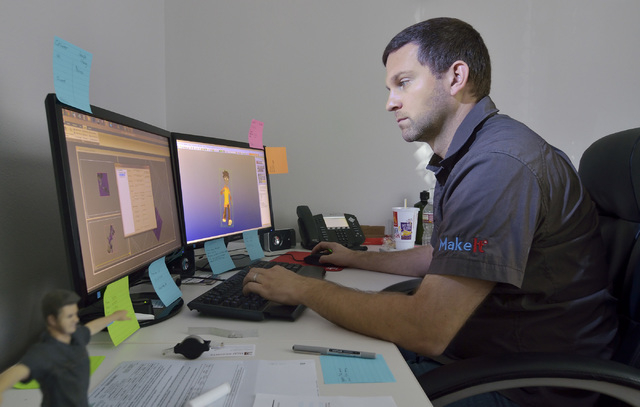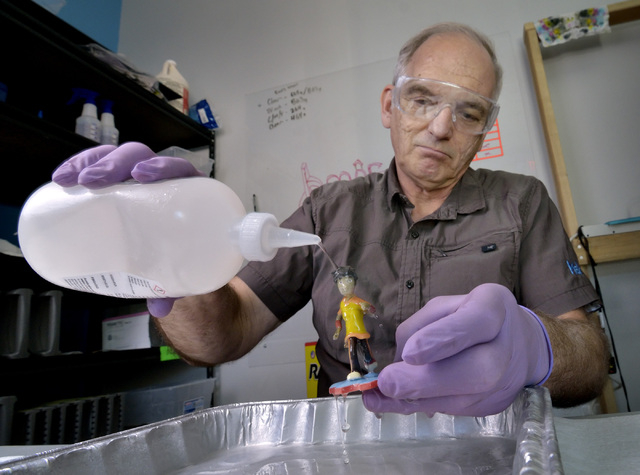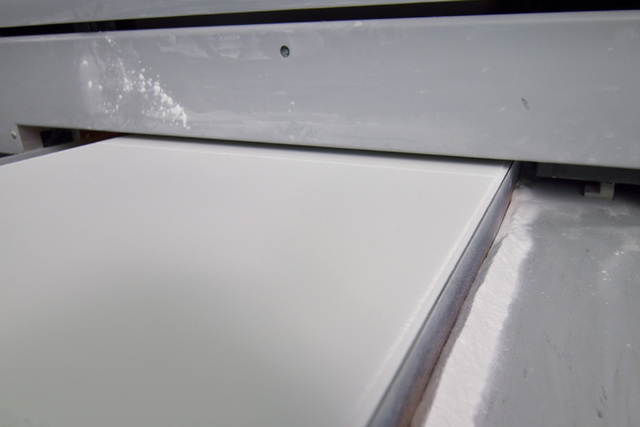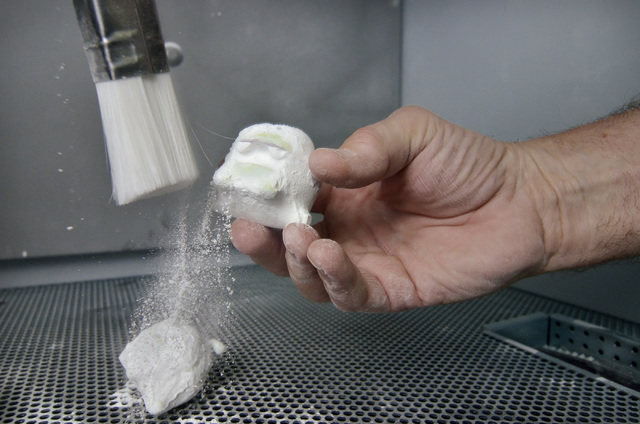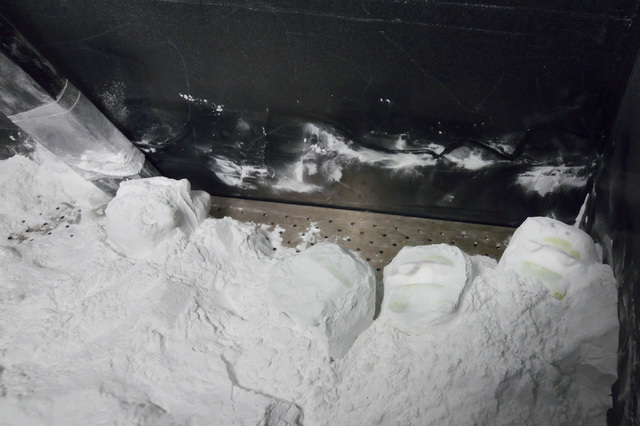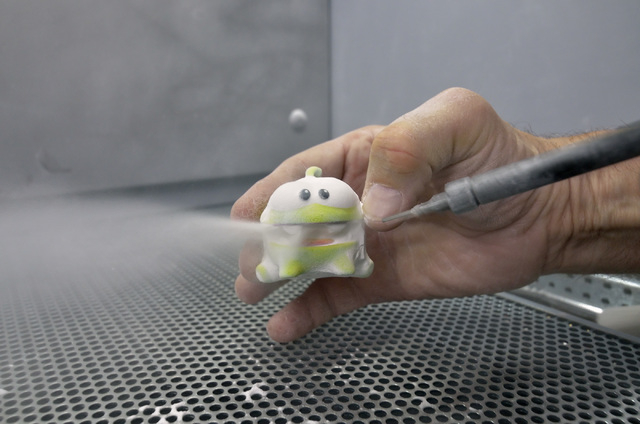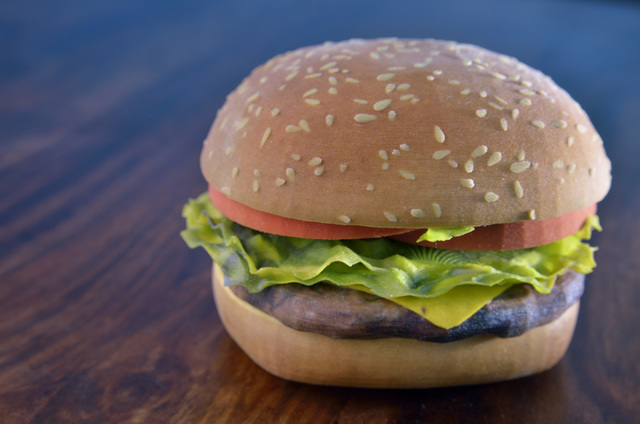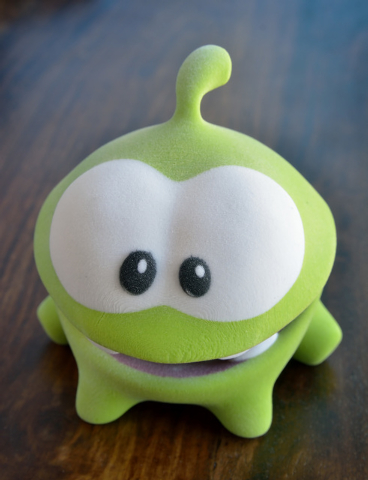Las Vegas company uses composites, high-tech printer to create 3-D models
Mike Emminger’s foray into 3-D printing started in a MakerBot showroom in New York City.
The retired lawyer took one look at the $2,000 desktop printer and thought, “This is cool! I want one, but I have to talk to my partner.”
His business partner was his son, Peter Emminger. After a 2-minute conversation, Emminger re-entered the store with a single question: “When can I take it home?”
3-D printing is an additive manufacturing process that makes solid, three-dimensional objects based on digital models. Models are printed in a single piece and are colored by dyed binding agents as they are printed, meaning they are finished in full color, or even clear, without painting. Often, larger objects are printed hollow to save materials costs.
In 2012, 3-D printing earnings totaled $2.2 billion, up 29 percent from 2011, reported Wohlers Associates, a Fort Collins, Colo., 3-D printing consultancy.
The Emmingers experimented with the machine, making nuts and bolts and chain-link models. They soon wanted to upgrade from Makerbot, which prints only in acrylonitrile butadiene styrene, or ABS, and polylactic acid, or PLA, plastics.
“Kids can’t even play with it because it’s toxic,” Mike Emminger said, “but you can make little trinkets to show friends.”
The pair moved on to a bigger and better commercial printer — the 3D Systems Project 660, which prints using powdery composite material rather than plastic. Today, the printer is the mainstay at their shop, MakeIt 3D Printing in Las Vegas.
3-D printing can cost anywhere from $10 to tens of thousands of dollars and is especially useful for design testing, one-offs or small-scale manufacturing. If hundreds or thousands of items are needed, traditional molding and manufacturing are typically more affordable. But if only a few models are needed, 3-D printing is faster and cheaper.
“It can shorten up your time frame a lot,” Mike Emminger said. “In business, time is money.”
Peter Emminger, whose background is in large-scale event planning with clients such as The New York Times, said he used to order 3-D printed parts for his events, but the customer service was bad and the products were subpar.
“We thought, ‘We’ll just do it ourselves,’ ” Peter Emminger said.
So they did.
The family company makes a range of products for a range of clients — from architectural models for design students and professionals to functioning product prototypes for engineers to art pieces. Clients include Skechers, the Las Vegas Convention and Visitors Authority and other high-profile customers they can’t disclose. Customers place orders from as far away as Lithuania and France.
On one occasion, the company created a bust of Mr. Las Vegasdotcom, the face of one of the authority’s out-of-state advertising campaigns, that was used to model a 16-foot-tall piñata for a Cinco de Mayo celebration in San Diego.
The company has created top-secret shoe models, intricate engine representations and customized desk sculptures.
The process begins with a computer design. Most manufactured parts are available in 3-D designs, but MakeIt accepts projects at any stage, from napkin sketches that need refining and 3-D-modeling to finished models that need printing.
“3-D printing is actually technology that’s been around for a while but is just coming into the public’s knowledge and frame of reference,” Mike Emminger said.
For more details on the company, visit makeit3d.com.



